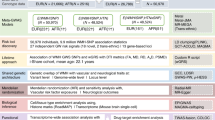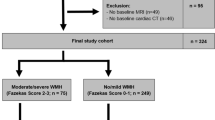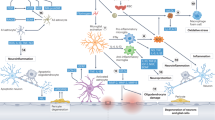Abstract
Impaired brain health encompasses a range of clinical outcomes, including stroke, dementia, vascular cognitive impairment, cognitive ageing, and vascular functional impairment. Conditions associated with poor brain health represent leading causes of global morbidity and mortality, with projected increases in public health burden as the population ages. Many vascular risk factors are shared predictors for poor brain health. Moreover, subclinical brain MRI markers of vascular damage are risk factors shared between stroke and dementia, and can be used for risk stratification and early intervention. The broad concept of brain health has resulted in a conceptual shift from vascular risk factors to determinants of brain health. Global campaigns to reduce cardiovascular diseases by targeting modifiable risk factors are necessary and will have a broad impact on brain health. Research is needed on the distinct and overlapping aetiologies of brain health conditions, and to define MRI markers to help clinicians identify patients who will benefit from aggressive prevention measures.
This is a preview of subscription content, access via your institution
Access options
Subscribe to this journal
Receive 12 print issues and online access
$209.00 per year
only $17.42 per issue
Buy this article
- Purchase on Springer Link
- Instant access to full article PDF
Prices may be subject to local taxes which are calculated during checkout



Similar content being viewed by others
References
Dhamoon, M. S., Dong, C., Elkind, M.S. & Sacco, R. L. Ideal cardiovascular health predicts functional status independently of vascular events: the Northern Manhattan Study. J. Am. Heart Assoc. http://dx.doi.org/10.1161/JAHA.114.001322.
Feigin, V. L. et al. Global and regional burden of stroke during 1990–2010: findings from the Global Burden of Disease Study 2010. Lancet 383, 245–254 (2014).
Murray, C. J. et al. Disability-adjusted life years (DALYs) for 291 diseases and injuries in 21 regions, 1990–2010: a systematic analysis for the Global Burden of Disease Study 2010. Lancet 380, 2197–2223 (2012).
Ferri, C. P. et al. Global prevalence of dementia: a Delphi consensus study. Lancet 366, 2112–2117 (2005).
Brookmeyer, R., Johnson, E., Ziegler-Graham, K. & Arrighi, H. M. Forecasting the global burden of Alzheimer's disease. Alzheimers Dement. 3, 186–191 (2007).
World Health Report 2003—Shaping the Future. World Health Organization [online], (2003).
Wimo, A. et al. The worldwide economic impact of dementia 2010. Alzheimers Dement. 9, 1.e3–11.e3 (2013).
Leblanc, G. G., Meschia, J. F., Stuss, D. T. & Hachinski, V. Genetics of vascular cognitive impairment: the opportunity and the challenges. Stroke 37, 248–255 (2006).
Rundek, T. et al. Insulin resistance and risk of ischemic stroke among nondiabetic individuals from the Northern Manhattan study. Arch. Neurol. 67, 1195–1200 (2010).
Boden-Albala, B. et al. Metabolic syndrome and ischemic stroke risk: Northern Manhattan Study. Stroke 39, 30–35 (2008).
Willey, J. Z. et al. Population attributable risks of hypertension and diabetes for cardiovascular disease and stroke in the northern Manhattan study. J. Am. Heart Assoc. 3, e001106 (2014).
Suk, S. H. et al. Abdominal obesity and risk of ischemic stroke: the Northern Manhattan Stroke Study. Stroke 34, 1586–1592 (2003).
Elkind, M. S. et al. Infectious burden and risk of stroke: the northern Manhattan study. Arch. Neurol. 67, 33–38 (2010).
Boden-Albala, B. et al. Daytime sleepiness and risk of stroke and vascular disease: findings from the Northern Manhattan Study (NOMAS). Circ. Cardiovasc. Qual. Outcomes 5, 500–507 (2012).
Monteith, T. S., Gardener, H., Rundek, T., Elkind, M. S. & Sacco, R. L. Migraine and risk of stroke in older adults: Northern Manhattan Study. Neurology 85, 715–721 (2015).
Gardener, H. et al. Adiponectin and risk of vascular events in the Northern Manhattan study. Atherosclerosis 226, 483–489 (2013).
Nickolas, T. L. et al. The association between kidney disease and cardiovascular risk in a multiethnic cohort: findings from the Northern Manhattan Study (NOMAS). Stroke 39, 2876–2879 (2008).
Rundek, T. et al. Carotid plaque, a subclinical precursor of vascular events: the Northern Manhattan Study. Neurology 70, 1200–1207 (2008).
Elkind, M. S. et al. Moderate alcohol consumption reduces risk of ischemic stroke: the Northern Manhattan Study. Stroke 37, 13–19 (2006).
Sacco, R. L. et al. The protective effect of moderate alcohol consumption on ischemic stroke. JAMA 281, 53–60 (1999).
Sacco, R. L. et al. Leisure-time physical activity and ischemic stroke risk: the Northern Manhattan Stroke Study. Stroke 29, 380–387 (1998).
Gardener, H. et al. Mediterranean-style diet and risk of ischemic stroke, myocardial infarction, and vascular death: the Northern Manhattan Study. Am. J. Clin. Nutr. 94, 1458–1464 (2011).
Gardener, H., Rundek, T., Wright, C. B., Elkind, M. S. & Sacco, R. L. Dietary sodium and risk of stroke in the Northern Manhattan study. Stroke 43, 1200–1205 (2012).
Hsei, F. I. & Chiou, H. Y. Stroke: morbidity, risk factors, and care in Taiwan. J. Stroke 16, 59–64 (2014).
Vasiliadis, A. V. & Zikic, M. Current status of stroke epidemiology in Greece: a panorama. Neurol. Neurochir. Pol. 49, 449–457 (2014).
Avezum, Á., Costa-Filho, F. F., Pieri, A., Martins, S. O. & Marin-Neto, J. A. Stroke in Latin America: burden of disease and opportunities for prevention. Glob. Heart http://dx.doi.org/10.1016/j.gheart.2014.01.006.
Sherzai, A. Z. & Elkind, M. S. Advances in stroke prevention. Ann. N. Y. Acad. Sci. 1338, 1–15 (2015).
Kannel, W., McGee, D. & Gordon, T. A general cardiovascular risk profile: the Framingham Study. Am. J. Cardiol. 38, 46–51 (1976).
Sacco, R. L. et al. Improving global vascular risk prediction with behavioral and anthropometric factors. The multiethnic NOMAS (Northern Manhattan Cohort Study). J. Am. Coll. Cardiol. 54, 2303–2311 (2009).
Committee on the Public Health Dimensions of Cognitive Aging, Board on Health Sciences Policy, Institute of Medicine. Cognitive Aging: Progress in Understanding and Opportunities for Action (eds Blazer, D. G. et al.). (National Academies Press, 2015).
Anstey, K. J., von Sanden, C., Salim, A. & O'Kearney, R. Smoking as a risk factor for dementia and cognitive decline: a meta-analysis of prospective studies. Am. J. Epidemiol. 166, 367–378 (2007).
Parrott, M. D. & Greenwood, C. E. Dietary influences on cognitive function with aging: from high-fat diets to healthful eating. Ann. N. Y. Acad. Sci. 1114, 389–397 (2007).
Laurin, D., Verreault, R., Lindsay, J., MacPherson, K. & Rockwood, K. Physical activity and risk of cognitive impairment and dementia in elderly persons. Arch. Neurol. 58, 498–504 (2001).
Wolf, P. A. et al. Relation of obesity to cognitive function: importance of central obesity and synergistic influence of concomitant hypertension. The Framingham Heart Study. Curr. Alzheimer Res. 4, 111–116 (2007).
Hassing, L. B. et al. Comorbid type 2 diabetes mellitus and hypertension exacerbates cognitive decline: evidence from a longitudinal study. Age Ageing 33, 355–361 (2004).
Knopman, D. et al. Cardiovascular risk factors and cognitive decline in middle-aged adults. Neurology 56, 42–48 (2001).
Goldstein, F. C. et al. Effects of hypertension and hypercholesterolemia on cognitive functioning in patients with Alzheimer disease. Alzheimer Dis. Assoc. Disord. 22, 336–342 (2008).
Nooyens, A. C., van Gelder, B. M. & Verschuren, W. M. Smoking and cognitive decline among middle-aged men and women: the Doetinchem Cohort Study. Am. J. Public Health 98, 2244–2250 (2008).
Arvanitakis, Z., Wilson, R. S., Bienias, J. L., Evans, D. A. & Bennett, D. A. Diabetes mellitus and risk of Alzheimer disease and decline in cognitive function. Arch. Neurol. 61, 661–666 (2004).
Schuur, M. et al. Insulin-resistance and metabolic syndrome are related to executive function in women in a large family-based study. Eur. J. Epidemiol. 25, 561–568 (2010).
Breteler, M. M. Vascular involvement in cognitive decline and dementia. Epidemiologic evidence from the Rotterdam Study and the Rotterdam Scan Study. Ann. N. Y. Acad. Sci. 903, 457–465 (2000).
Cerhan, J. R. et al. Correlates of cognitive function in middle-aged adults. Atherosclerosis Risk in Communities (ARIC) Study Investigators. Gerontology 44, 95–105 (1998).
Wright, C. B., Elkind, M. S., Luo, X., Paik, M. C. & Sacco, R. L. Reported alcohol consumption and cognitive decline: the Northern Manhattan study. Neuroepidemiology 27, 201–207 (2006).
Vieira, J. R. et al. The metabolic syndrome and cognitive performance: the Northern Manhattan Study. Neuroepidemiology 37, 153–159 (2011).
Levin, B. E. et al. Modeling metabolic syndrome and its association with cognition: the Northern Manhattan study. J. Int. Neuropsychol. Soc. 20, 951–960 (2014).
Knopman, D. S., Mosley, T. H., Catellier, D. J. & Coker, L. H. Fourteen-year longitudinal study of vascular risk factors, APOE genotype, and cognition: the ARIC MRI Study. Alzheimers Dement. 5, 207–214 (2009).
Rawlings, A. M. et al. Diabetes in midlife and cognitive change over 20 years: a cohort study. Ann. Intern. Med. 161, 785–793 (2014).
Lloyd-Jones, D. M. et al. Defining and setting national goals for cardiovascular health promotion and disease reduction: the American Heart Association's strategic Impact Goal through 2020 and beyond. Circulation 121, 586–613 (2010).
Dong, C. et al. Ideal cardiovascular health predicts lower risks of myocardial infarction, stroke, and vascular death across whites, blacks, and hispanics: the Northern Manhattan study. Circulation 125, 2975–2984 (2012).
Reis, J. P. et al. Cardiovascular health through young adulthood and cognitive functioning in midlife. Ann. Neurol. 73, 170–179 (2013).
Crichton, G. E., Elias, M. F., Davey, A. & Alkerwi, A. Cardiovascular health and cognitive function: the Maine–Syracuse Longitudinal Study. PLoS ONE 9, e89317 (2014).
Nishtala, A. et al. Midlife cardiovascular risk impacts executive function: Framingham offspring study. Alzheimer Dis. Assoc. Disord. 28, 16–22 (2014).
Joosten, H. et al. Cardiovascular risk profile and cognitive function in young, middle-aged, and elderly subjects. Stroke 44, 1543–1549 (2013).
Unverzagt, F. W. et al. Vascular risk factors and cognitive impairment in a stroke-free cohort. Neurology 77, 1729–1736 (2011).
Kaffashian, S. et al. Predicting cognitive decline: a dementia risk score vs. the Framingham vascular risk scores. Neurology 80, 1300–1306 (2013).
Conijn, M. M. et al. Cerebral microbleeds on MR imaging: comparison between 1.5 and 7T. Am. J. Neuroradiol. 32, 1043–1049 (2011).
van Veluw, S. J. et al. Cortical microinfarcts on 3T MRI: Clinical correlates in memory-clinic patients. Alzheimers Dement. http://dx.doi.org/10.1016/j.jalz.2014.12.010.
Prabhakaran, S. et al. Presence of calcified carotid plaque predicts vascular events: the Northern Manhattan Study. Atherosclerosis 195, e197–e201 (2007).
Jeerakathil, T. et al. Stroke risk profile predicts white matter hyperintensity volume: the Framingham Study. Stroke 35, 1857–1861 (2004).
Martinez-Ramirez, S., Greenberg, S. M. & Viswanathan, A. Cerebral microbleeds: overview and implications in cognitive impairment. Alzheimers Res. Ther. 6, 33 (2014).
Marcus, J. et al. Baseline and longitudinal increases in diastolic blood pressure are associated with greater white matter hyperintensity volume: the Northern Manhattan study. Stroke 42, 2639–2641 (2011).
Dufouil, C., Alpérovitch, A. & Tzourio, C. Influence of education on the relationship between white matter lesions and cognition. Neurology 60, 831–836 (2003).
Stern, Y. What is cognitive reserve? Theory and research application of the reserve concept. J. Int. Neuropsychol Soc. 8, 448–460 (2002).
Lyall, D. M. et al. Are APOE ε genotype and TOMM40 poly-T repeat length associations with cognitive ageing mediated by brain white matter tract integrity? Transl. Psychiatry 4, e449 (2014).
Wardlaw, J. M. et al. Neuroimaging standards for research into small vessel disease and its contribution to ageing and neurodegeneration. Lancet Neurol. 12, 822–838 (2013).
Fisher, C. M. Lacunes: small, deep, cerebral infarcts. Neurology 15, 774–784 (1965).
Vermeer, S. E., Longstreth, W. T. Jr & Koudstaal, P. J. Silent brain infarcts: a systematic review. Lancet Neurol. 6, 611–619 (2007).
Scarmeas, N. et al. Mediterranean diet and magnetic resonance imaging-assessed cerebrovascular disease. Ann. Neurol. 69, 257–268 (2011).
Windham, B. G. et al. Small brain lesions and incident stroke and mortality: a cohort study. Ann. Intern. Med. 163, 22–31 (2015).
Yu, L. et al. Purpose in life and cerebral infarcts in community-dwelling older people. Stroke 46, 1071–1076 (2015).
Viswanathan, A. & Chabriat, H. Cerebral microhemorrhage. Stroke 37, 550–555 (2006).
Staals, J., Makin, S. D., Doubal, F. N., Dennis, M. S. & Wardlaw, J. M. Stroke subtype, vascular risk factors, and total MRI brain small-vessel disease burden. Neurology 83, 1228–1234 (2014).
Ovbiagele, B. & Saver, J. L. Cerebral white matter hyperintensities on MRI: current concepts and therapeutic implications. Cerebrovasc. Dis. 22, 83–90 (2006).
Maniega, S. M. et al. White matter hyperintensities and normal-appearing white matter integrity in the aging brain. Neurobiol. Aging 36, 909–918 (2015).
Wardlaw, J. M., Valdés Hernández, M. C. & Muñoz-Maniega, S. What are white matter hyperintensities made of? Relevance to vascular cognitive impairment. J. Am. Heart Assoc. http://dx.doi.org/10.1161/JAHA.114.001140.
Debette S. & Markus, H. S. The clinical importance of white matter hyperintensities on brain magnetic resonance imaging: systematic review and meta-analysis. BMJ 341, c3666 (2010).
Debette, S. et al. Association of MRI markers of vascular brain injury with incident stroke, mild cognitive impairment, dementia, and mortality: the Framingham Offspring Study. Stroke 41, 600–606 (2010).
Vermeer, S. E. et al. Silent brain infarcts and white matter lesions increase stroke risk in the general population: the Rotterdam Scan Study. Stroke 34, 1126–1129 (2003).
Wright, C. B. et al. White matter hyperintensities and subclinical infarction: associations with psychomotor speed and cognitive flexibility. Stroke 39, 800–805 (2008).
Jeerakathil, T. et al. Cerebral microbleeds: prevalence and associations with cardiovascular risk factors in the Framingham Study. Stroke 35, 1831–1835 (2014).
Haley, K. E., Greenberg, S. M. & Gurol, M. E. Cerebral microbleeds and macrobleeds: should they influence our recommendations for antithrombotic therapies? Curr. Cardiol. Rep. 15, 425 (2013).
Romero, J. R. et al. Risk factors, stroke prevention treatments, and prevalence of cerebral microbleeds in the Framingham Heart Study. Stroke 45, 1492–1494 (2014).
Wiegman, A. F. et al. Cerebral microbleeds in a multiethnic elderly community: demographic and clinical correlates. J. Neurol. Sci. 345, 125–130 (2014).
Sveinbjornsdottir, S. et al. Cerebral microbleeds in the population based AGES-Reykjavik study: prevalence and location. J. Neurol. Neurosurg. Psychiatry 79, 1002–1006 (2008).
Akoudad, S. et al. Cerebral microbleeds are associated with an increased risk of stroke: the Rotterdam Study. Circulation 132, 509–516 (2015).
Miwa, K. et al. Multiple or mixed cerebral microbleeds and dementia in patients with vascular risk factors. Neurology 83, 646–653 (2014).
Gutierrez, J. Dolichoectasia and the risk of stroke and vascular disease: a critical appraisal. Curr. Cardiol. Rep. 16, 525 (2014).
Dong, C. et al. Cognitive correlates of white matter lesion load and brain atrophy: the Northern Manhattan Study. Neurology 85, 441–449 (2015).
Cao, J. J. et al. Association of carotid artery intima-media thickness, plaques, and C-reactive protein with future cardiovascular disease and all-cause mortality: the Cardiovascular Health Study. Circulation 116, 32–38 (2007).
Zakai, N. A. et al. Inflammation and hemostasis biomarkers and cardiovascular risk in the elderly: the Cardiovascular Health Study. J. Throm Haemost. 5, 1128–1135 (2007).
Ballantyne, C. M. et al. Lipoprotein-associated phospholipase A2, high-sensitivity C-reactive protein, and risk for incident ischemic stroke in middle-aged men and women in the Atherosclerosis Risk in Communities (ARIC) study. Arch. Intern. Med. 165, 2479–2484 (2005).
Luna, J. M. et al. High-sensitivity C-reactive protein and interleukin-6-dominant inflammation and ischemic stroke risk: the Northern Manhattan study. Stroke 45, 979–987 (2014).
Heneka, M. T. et al. Neuroinflammation in Alzheimer's disease. Lancet Neurol. 14, 388–405 (2015).
Engelhart, M. J. et al. Inflammatory proteins in plasma and the risk of dementia: the Rotterdam Study. Arch. Neurol. 61, 668–672 (2004).
Elkind, M. S. et al. Infectious burden and carotid plaque thickness: the Northern Manhattan study. Stroke 41, e117–e122 (2010).
Katan, M. et al. Infectious burden and cognitive function: the Northern Manhattan Study. Neurology 80, 1209–1215 (2013).
Wright, C. B. et al. Infectious burden and cognitive decline in the Northern Manhattan Study. J. Am. Geriatr. Soc. 63, 1540–1545 (2015).
Smith, S. C. Jr et al. Our time: a call to save preventable death from cardiovascular disease (heart disease and stroke). Circulation 126, 2769–2775 (2012).
Smith, S. C. Jr et al. Moving from political declaration to action on reducing the global burden of cardiovascular diseases: a statement from the global cardiovascular disease taskforce. Circulation 128, 2546–2548 (2013).
Zoghbi, W. A. et al. Sustainable development goals and the future of cardiovascular health: a statement from the Global Cardiovascular Disease Taskforce. J. Am. Heart Assoc. 3, e000504 (2014).
Beery, K. E. The VMI Developmental Test of Visual Motor Integration (Modern Curriculum Press, 1989).
Acknowledgements
The authors are supported by grants from the National Institute of Neurological Disorders and Stroke (R01 NS29993) and the Evelyn F. McKnight Brain Institute at the Miller School of Medicine.
Author information
Authors and Affiliations
Contributions
All authors contributed to researching literature for the article, and provided substantial contributions to discussion of the content, and writing, reviewing and editing of the article.
Corresponding author
Ethics declarations
Competing interests
C.B.W. receives royalties for two chapters on vascular dementia in UptoDate.com. The other authors declare no competing interests.
Rights and permissions
About this article
Cite this article
Gardener, H., Wright, C., Rundek, T. et al. Brain health and shared risk factors for dementia and stroke. Nat Rev Neurol 11, 651–657 (2015). https://doi.org/10.1038/nrneurol.2015.195
Published:
Issue Date:
DOI: https://doi.org/10.1038/nrneurol.2015.195
This article is cited by
-
Evidenced-based biological prevention and intervention strategies of dementia: a narrative review
Current Psychology (2023)
-
Neuroblast senescence in the aged brain augments natural killer cell cytotoxicity leading to impaired neurogenesis and cognition
Nature Neuroscience (2021)
-
Von Willebrand factor and ADAMTS13 activity in relation to risk of dementia: a population-based study
Scientific Reports (2018)
-
Peripheral post-ischemic vascular repair is impaired in a murine model of Alzheimer’s disease
Angiogenesis (2018)
-
Mediterranean Diet in Preventing Neurodegenerative Diseases
Current Nutrition Reports (2018)



